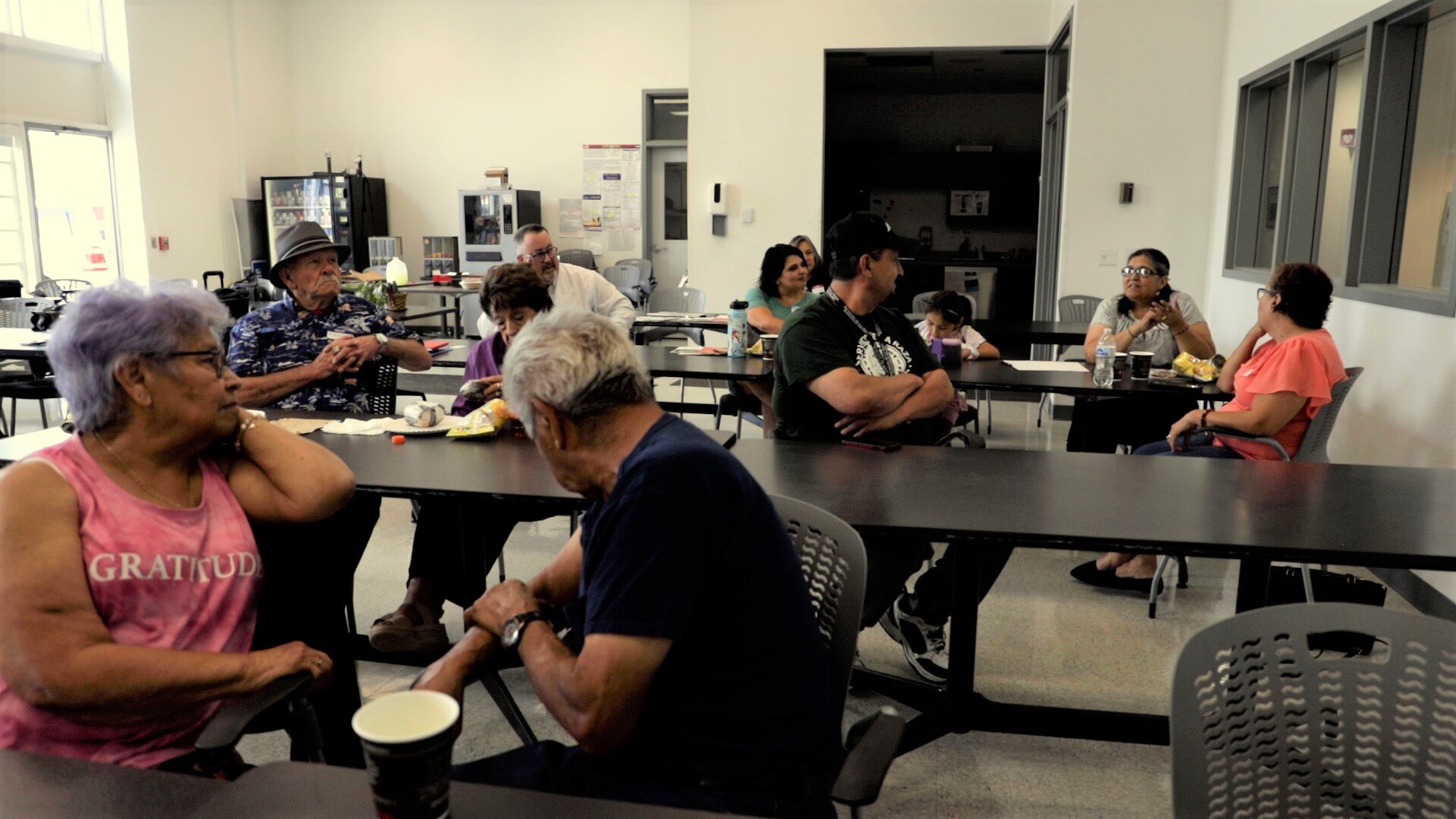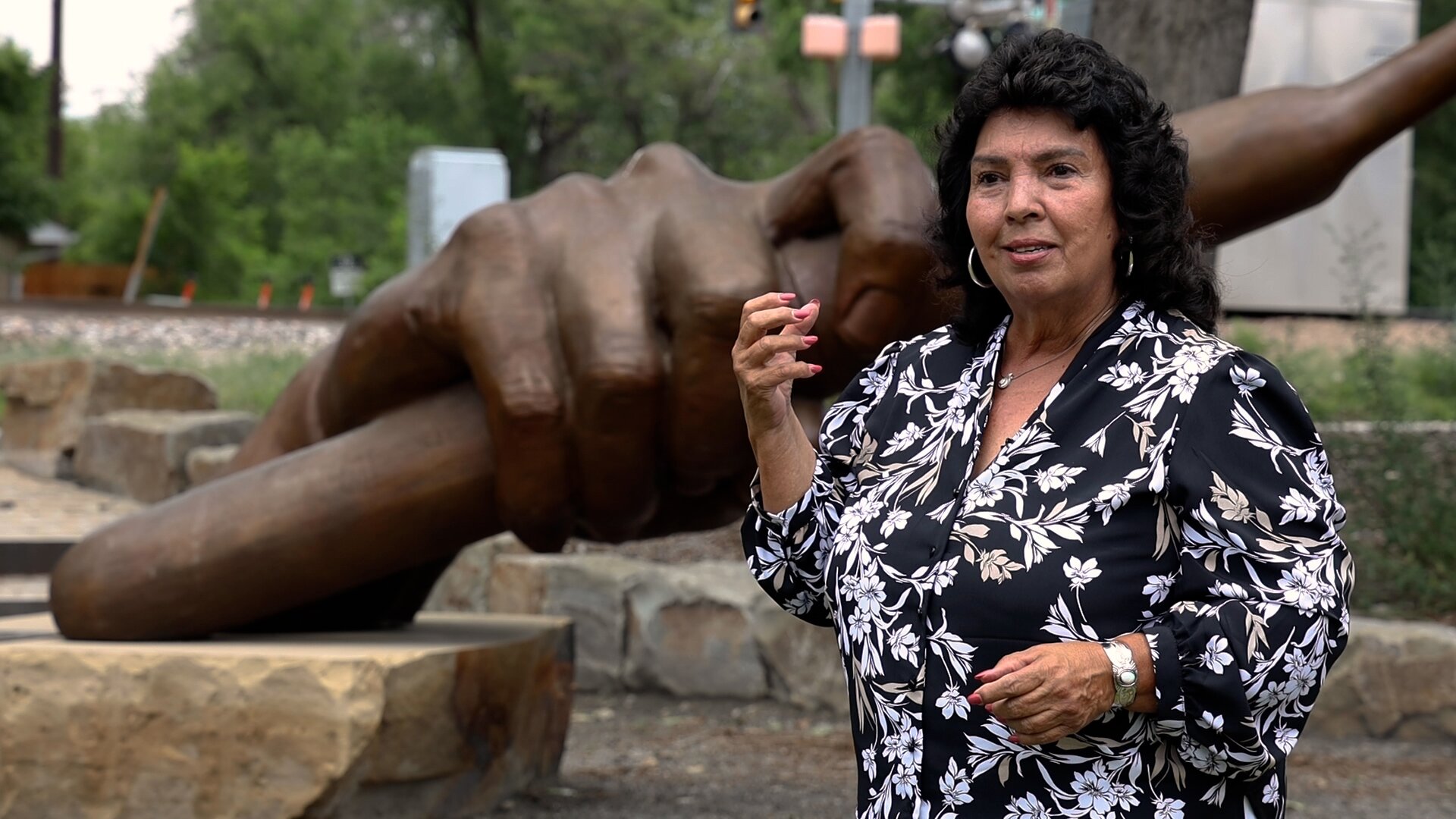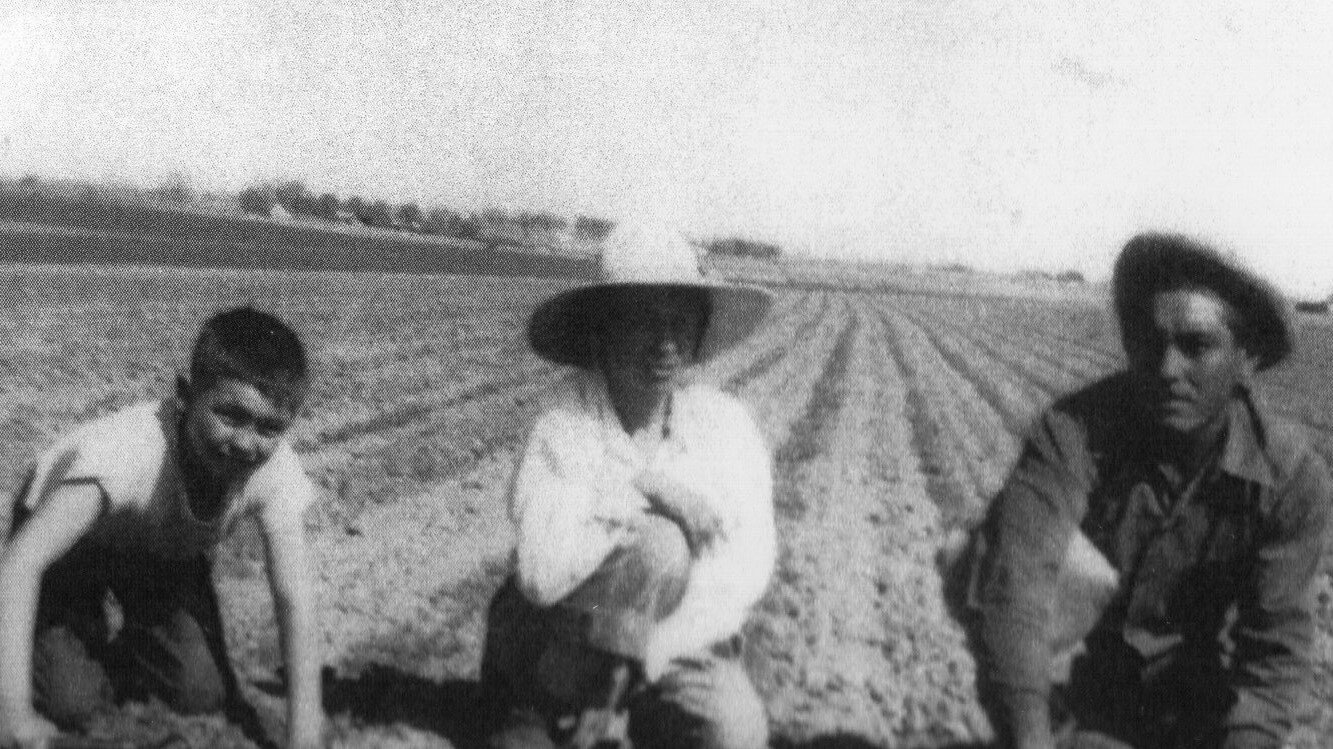Fact-finding from the fields of Fort Collins' history

This article is part of ongoing reporting and production for a new episode of Colorado Experience. Season 10 of Colorado Experience is set to premiere this September.
FORT COLLINS, Colo. — A basket of vegetables can mean more than just food. For some Fort Collins families, a particular basket of vegetables can bring back a whole lot of memories.
“It brings back fond memories growing up,” said one participant of a recent memory-jogging workshop. “This was during the summer, of course. There was no school. So you were ripe for completing the job.”
Through this conversation, northern Coloradans shared their personal memories or family histories of working in agriculture fields in the area, particulalry in the sugar beet fields. Sugar beet production was one of the biggest industries in Fort Collins through the 1960s.
This event, which took place July 8, was the second of four "memory workshops" hosted by History Colorado's Museum of Memory Initiative and the nonprofit Mujeres de Colores.
“Going to community is the way that we do it, by listening to their stories, by having them be the authors of their own stories is a way that we're preserving history,” said Yadira Solis, the director of Museum of Memory and History Colorado Center.

On Saturday, July 8 this group came together to share oral histories of working in agriculture fields in northern Colorado.
Solis sparked the conversation during the most recent workshop by displaying a basket containing cucumbers and beets, hoping the produce would remind some of the participants of stories they haven’t told. Her strategy worked instantly, propelling the group into discussions that lasted for nearly an hour and a half. Many of the attendees worked in the sugar beet fields in northern Colorado, starting as young children of immigrant parents.
“It was hot. It was a long day. The work was hard. It wasn't easy,” Gloria Balderrama described as she prepared her family photos to be scanned.
History Colorado is not only looking to collect stories, but also family photos to include in an exhibit that will eventually be displayed at the museum. Balderrama said her sister, mom and dad worked in the fields consistently throughout their lives; she tried it once and decided the working conditions were too tough for her to continue.
Most of the people in attendance who shared first-hand experience in the fields described long, 12 hour-plus days in hot, back-breaking conditions. Most of the day was spent hunched over, caring for crops that would be harvested and sent to the masses.
Despite recounting emotional stories about the grueling conditions, each attendee showed a sense of pride with each story they shared. Tears stung the back of eyes around the room as people considered the sacrifice their parents or grandparents made in order to make a little bit of money for the family — para mi familia, as Betty Aragon-Mitotes said.
“They didn't go and beg for money. They worked,” she said. They knew the value of money and they knew the value of family concept. Everybody helps.”
Aragon-Mitotes is the founder Mujeres de Colores, the partner nonprofit for these memory workshops. She is a strong advocate for the community, specifically for the Hispanic community in Fort Collins, whose stories are often left out of the history books.
“I get really emotional because … I always feel like I'm going to cry because of the sacrifice that people did. When you think about the working conditions, the pay … they didn't value the Hispanic workers the way they should have,” Aragon-Mitotes said.
Sugar Beet History in Fort Collins
In the 1890s, a serious economic depression hit Colorado along with the rest of the country. The mining industry that drew so many white settlers to the area had dropped off and entrepreneurs were looking for new industries.
Along came the sugar beet. Different from beetroot, the crop has a pale, tan color and can grow much bigger in size and weight and is composed of about 20% sucrose. The top is then cut off and sent to a factory to be processed into sugar.
Former mining owners transitioned to sugar beet farming and opened factories in the early 1900s. After the Department of Agriculture and the Experiment Station of Colorado Agricultural College (which would later become Colorado State University) found sugar beets could be grown in this environment, a race began to turn the beets into a profit. The Great Western Sugar Company founded in Colorado, became the largest producer of beet sugar in the country and opened a factory in Fort Collins in 1903.
As farmers bought up land and planned to grow sugar beets, they discovered proper cultivation required a lot of work to be done by hand and, as a result, sought cheap labor. That meant recruiting Mexicans, Native Americans and other Hispano communities to work in northern Colorado.
For five decades, the factory in Fort Collins employed hundreds of workers and sparked more sugar beet fields to pop up around the area. However, the factory in Fort Collins closed in the mid-50s.
What remained were thousands of Hispanic Americans who had built their lives and families in Fort Collins.
Sugar Beet Park
Over the last 150 years, Fort Collins has grown and transformed. This is why Aragon-Mitotes and others in the area wanted to make sure there was a place that honored and remembered the roots of the Hispanic community in the city.
In September 2019, the city opened a new park at the corner of Vine Drive and Ninth Street called “Sugar Beet Park.” The park has a playground, picnic shelter, garden, basketball hoops and other features you can find in most city parks. What makes this park unique is a large wooden sugar beet structure in the middle of the playground area, reminding the park attendees of the community history.
“I want people to understand [that] these folks helped the sugar beet industry flourish. They helped the economy in Fort Collins flourish. So we're part of the very fabric of Fort Collins,” said Aragon-Mitotes.
It’s that reason why she wanted to add another element to Sugar Beet Park that truly recognized that work and sacrifice that helped build the city. She led the charge for a monument to be added to the park, and in 2021 workers installed a Frank Garza sculpture called “The Hand that Feeds” in the northeast corner of the park.

Betty Aragon-Mitotes is and advocate for the Hispanic community in Fort Collins and the founder of Mujeres de Colores, a nonprofit.
The large bronze sculpture depicts a hand holding a short-handled hoe, or el cortito, a tool commonly used in the sugar beet fields. Aragon-Mitotes’ organization donated the sculpture.
“So I want this to be a representation of not only the beet workers, but any field workers that sacrificed and worked in an industry where they weren't valued,” she explained. “I wanted to make sure that since they were never recognized, they're getting the recognition today.”
The short-handled hoe sculpture recognizes how using the hoe affected workers. The short handle forced laborers to bend over for 12 hours, or work on their hands and knees. For many people, these conditions resulted in life-long back injuries.
“I had people say they couldn't even walk because of the pain in their back,” Aragon-Mitotes explained.
This was a sentiment that was shared by many people sharing oral histories during the Fort Collins memory project event. Isabelle Martinez had to use the short-handled hoe during long work days.
“Your knees hurt because you’re always on your knees a lot, and your back — Oh, that's the hard part,” said Martinez.
She has lived in Fort Collins for all 86 years of her life. Martinez's colorful hair matches her colorful personality, bringing a bit of energy to the room while retelling these stories.
Her parents both came to Colorado from Mexico for a new life and work. She started working in the fields with her parents when she was 7 years old. She remembers having to wake up early in the morning to work in the fields and beat the worst of the heat.
The short-handled hoe was called into question on a wide-spread level in the late sixties and seventies. The agriculture labor movement led by Cesar Chavez, activated the demand to remove the tool from farm fields. In 1975, the California Supreme Court declared it an “unsafe hand tool” and banned it from use. Colorado didn’t outlaw the tool until 2021 as part of a bill concerning agricultural workers’ rights.
Para Mi Familia
With most of the oral histories shared during the memory workshop, family was at the heart of the stories.
One woman who attended the event came with multiple generations of her family. While the youngest child played on a tablet, she recounted working in the fields as a young kid and her grandmother getting up at 5 a.m. to make burritos for the family.
Once the burrito was brought up, it seemed almost everyone in the room perked up with memories of their own families eating burritos before a long day’s work in the fields. These shared experiences brought tears to some eyes.
Grandmothers and mothers often did things like cooking and holding family gatherings that held the family together. These women were often considered the glue for the family.
“She was the one that made sure that the burritos were done in the morning, that the kids were ready to go to help them work out in the fields … I know this is true with my own family,” Aragon-Mitotes explained. “This is what this is all about, is para mi familia — for my family, the struggle.”
“It's not just going out in the fields, but really what family is, what having and providing a service is, and almost a reframing of … the work that they're doing is something very much to be proud of,” explained Solis. “Something that they feel should be told as part of their history.”
There are two more sessions for the Fort Collins Museum of Memory Project on July 22nd and August 5th. You can find the information about the project here.

Chuck Solano, age 8 (left), mother, age 22, father, age 27 working on their knees in the sugar beet fields. Photo courtesy Chuck Solano through History Colorado.
Amanda Horvath is the managing producer at Rocky Mountain PBS. You can reach her at amandahorvath@rmpbs.org.
Peter Vo is the journalism intern with Rocky Mountain PBS. You can reach him at petervo@rmpbs.org.
Alexis Kikoen is the executive producer at Rocky Mountain PBS. You can reach her at alexiskikoen@rmpbs.org.
